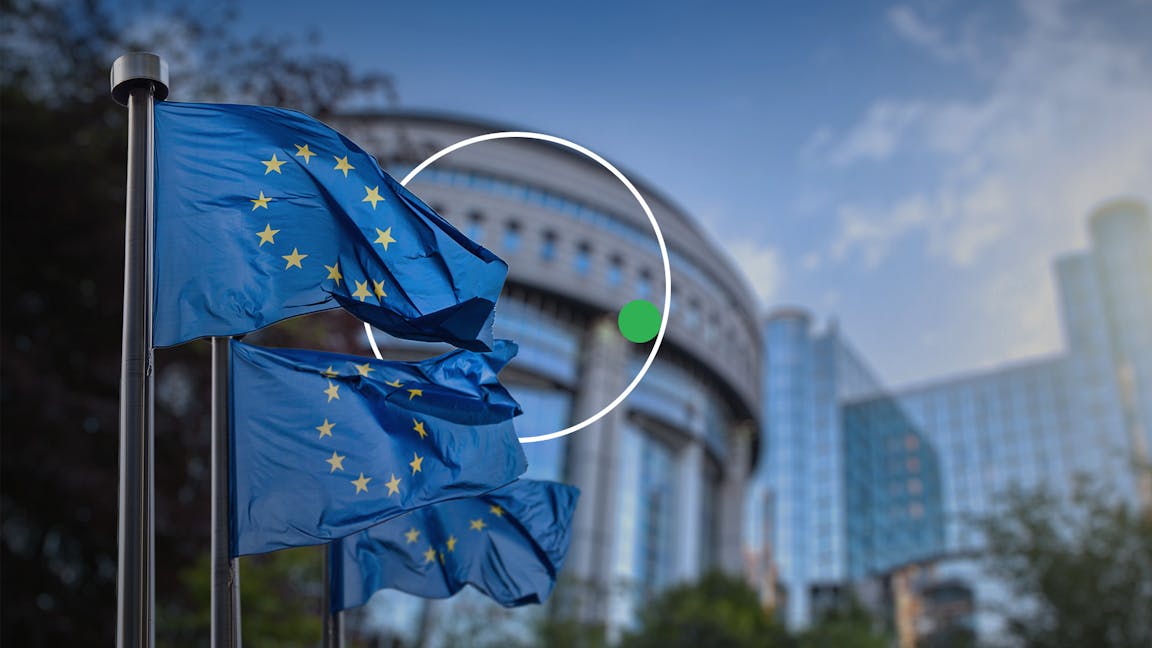
European markets have had a strong start to the year. The MSCI EMU index gained almost 10% in January, as investors returned to the region, recession fears receded, and market optimism rose. However, Europe may continue to face significant headwinds throughout the year and beyond.
In December, markets were almost certain that Europe would enter recession in 2023. But the consensus has shifted – and quickly.
The eurozone grew unexpectedly during the final quarter of 2022, despite high inflation and the ongoing energy crisis. In January, the International Monetary Fund noted that eurozone economies have been ‘surprisingly resilient’ and upgraded its outlook for the region. A recent flash estimate suggested that inflation is also continuing to fall.
A brighter outlook for Europe drove markets higher in January, however we think they will continue to be volatile as they react to economic data. While stronger-than-expected economic growth is a good sign, it could also mean that inflation stays higher for longer.
As long-term investors, we analyse the macroeconomic themes affecting markets, but do not position our portfolios to try and time the peaks and troughs. We are underweight Europe as we see three significant challenges overhanging the region: persistent inflation, a stronger euro, and the ongoing energy crisis.
1. The ECB is still battling inflation
The European Central Bank (ECB) has a tricky year ahead. It must try and lower inflation in the eurozone’s 20 economies using the main tool at its disposal – interest rates.
Although the overall level of inflation is falling in Europe, ‘core’ elements are still rising. The ECB is therefore continuing to raise rates to put downward pressure on prices, hiking its base rate another 50 basis points (or 0.5%) to 3.0% at the February meeting. By continuing to tighten monetary policy, the ECB has signalled that it is remaining ‘hawkish’ for now, with the market pricing in additional interest rate hikes to 3.25% by June.
Like other central banks, when it has finished raising interest rates, the ECB will also try to lower inflation by ‘quantitative tightening’ or ‘QT’. At its December meeting, the central bank announced it would begin its initial phase of ‘unwinding’ (selling) its €5trn bond holdings in March. It will aim to sell €15bn per month through to June. For context, the Federal Reserve – the US central bank – is currently running at a rate of $100bn a month. Because the ECB covers several economies, it has to sell bonds at a lower and slower rate than the Fed to avoid disrupting markets.
2. The euro is getting stronger
Over the last six months, the euro has gained over 6% against the US dollar, and experienced its best three-month run since 2011. This sounds like good news, but in fact, a stronger euro can make conditions harder for export-driven economies and manufacturing businesses who rely on foreign trade. Germany, a trade-leveraged economy, is likely to suffer the most from a stronger euro and may underperform its peers as a result.
Currencies and currency movements impact economies, markets, and investors. An upcoming blog in this series will explore currencies in more depth. We’ll focus on the US dollar, which is highly influential across the globe and we expect this to fall in value this year.
3. The energy crisis isn’t over yet
Last year, Russia’s invasion of Ukraine plunged Europe into an energy crisis from which it is yet to emerge.
The conflict, which has been in a deadlock for months, appears to be entering a new phase. The EU has embargoed Russian oil imports, while Germany and the US have agreed to send tanks to the frontline ahead of what is expected to be a critical period in the Spring.
Russia once supplied over 40% of European gas. But, in a relatively short space of time, Europe has managed to significantly reduce its energy dependence on Russia, which now sits at around 17%. Last year’s sharp pivot away from cheap Russian supplies paired with shortages, resulted in a dramatic spike in the price of natural gas, which fed through to higher inflation and power prices across Europe.
One year on, what’s changed?
On the one hand, things have improved because they have stabilised. Europe managed to avoid an energy catastrophe this winter, thanks to several factors.
Across the continent, citizens have dramatically reduced their energy consumption, which was 25% below average in January. Businesses, subsidised and supported by their governments, cut production, helping ease demand and relieve pressure on supply.
Stockpiling and lower demand due to unseasonably mild weather also allowed countries to build up strong reserves. In January, gas storage was 81% full, the highest January on record. This has helped drive down the price of liquefied natural gas (LNG). With storage high and prices normalised, the short-term outlook for Europe is stronger than many anticipated six months ago.
But, risks for the future remain. The price and supply of energy will continue to be volatile and uncertain. The market is waiting to see how the latest round of sanctions will impact supply, while Chinese demand for oil and LNG will increase as it continues to reopen, putting an upward pressure on prices. Increased reliance on and competition with China for natural gas will ensure that prices remain elevated and could stoke international competition.
Europe may have been lucky with warmer weather this winter so far, but what about next? LNG storage capacity is limited, which means that prices are exposed to weather-related risks. Even if it refills storage this summer, a cold winter could leave households, businesses, and the economy exposed.
Longer-term, Europe is in the process of recalibrating its energy policy. It will be looking to diversify and secure its supply, invest in alternative forms of energy, and stabilise prices. The European Union has already published proposals to overhaul the electricity market, while EU countries have agreed on new and ambitious long-term goals for the deployment of renewable energy. The acceleration of renewable energy initiatives is good for the planet, but will take time, may be politically controversial, and will add to inflationary pressures in the short-term.
The Nutmeg view
We think that, despite a strong start to the year, Europe is likely to experience bouts of volatility through 2023 across all facets of its economy. We’ll be treading carefully before adding to any of our positions here and continue to keep an underweight allocation to European equity markets, keeping a close eye on the situation in Ukraine and the impact it continues to have on the region and its energy supply.
Risk warning
As with all investing, your capital is at risk. The value of your portfolio with Nutmeg can go down as well as up and you may get back less than you invest. Past performance is not a reliable indicator of future performance.
